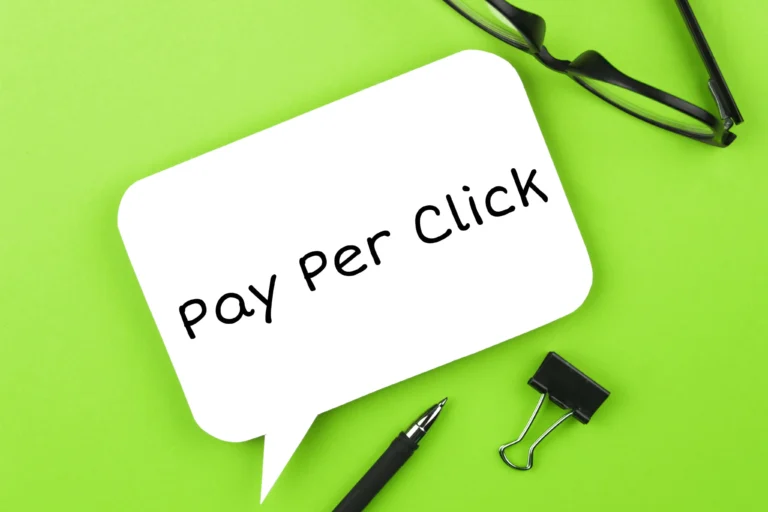Dive Deep into Google Ads Cost Per Click (CPC)
In the fast-paced realm of online advertising, getting a grip on your Google Ads Cost Per Click (CPC) isn’t just a technicality; it’s the foundation for making a profit and achieving sustainable growth. While the instant visibility that Google Ads provides is incredibly powerful, truly unlocking its potential requires you to become a pro at managing your CPC.
In this comprehensive guide, we’ll break down googlge ads budget management, what Google Ads Cost Per Click really means, highlight the key factors that influence it, what is a good CPC for google ads and share practical strategies to optimize your CPC.
By doing so, you’ll be well on your way to getting a much better return on your advertising spend (ROAS) compared to your competitors.
This isn’t just about setting a budget; it’s a strategic dance of bidding, quality, and precise targeting to make sure every dollar you invest delivers the biggest bang for your buck.
if You are looking for outsourcing your you ads management to a reliable google ads agency visit our google ads services page.

How Your Google Ads Price Per Click Is Calculated?
After setup any campaign in google ads, Once the ad get approved, Performance of your ad campaign and the website itself will calculated and determine google price per click for joining in the Google auction.
Google uses a “second-price auction” system. This means you typically end up paying just $0.1 more than what the next highest Ad Rank bidder would have needed to secure their spot.
factors to decide which ads show up, their order, and the cost of each click. The key element that influences your ad’s position and your actual CPC is your Ad Rank.
What exactly is Ad Rank?
Well, it’s a value that plays a crucial role in determining a couple of key things: first where your ad lands on the search results page, second whether your ad even gets displayed at all, Here’s the formula for ad rank:
Ad Rank = Max CPC Bid × Quality Score + Ad Extensions Impact
However, Google now uses a more complex Furmoula in 2025:
Ad Rank = Bid + Expected Impact of Extensions + Ad Quality + Competition + Intent of the search
Components Explained:
1- Bid : The maximum amount you’re willing to pay for a click (Max CPC).
2- Ad Quality Based on:
- CTR (Click-Through Rate) – expected
- Ad relevance
- Landing page experience
3- Expected Impact of Extensions & Ad Formats : Google evaluates how your ad extensions (like sitelinks, callouts, call extensions) are likely to affect performance.
4- Context of the Search : Includes:
- Searcher’s location
- Device type
- Time of search
- Search terms
- Other competing ads
Now, what could “Ad Rank Max” possibly mean? It could refer to one of several things, depending on the context, The highest Ad Rank you could achieve if you had:
- A flawless Quality Score (10/10)
- Maximum effectiveness from ad extensions
- A high bid
- The top position your ad could occupy (like position #1 on Google search)
For example
if your Max CPC is $3 and your competitor below you has an Ad Rank that would require them to bid $2.30 to maintain their position, you could end up roughly paying $2.35 per click.

Cost Per Click Google Ads Fundamental
PPC stand for Pay per click Unlike other advertising methods like CPM – Cost Per Mille – you will pay for Impressions; better to say pay for each thousands of views, with pay-per-click (PPC), you only get charged when a user takes the step to engage with your ad by clicking or simply tapping on it in mobiles phone.
It is also known as “pay-for-performance” approach to advertising on google, which links your expenditure directly to user interaction with your ad, is what makes Google Ads CPC so effective, measurable, and adjustable during campaigns.
What Is A Good CPC For Google Ads
a good CPC (Cost Per Click) is one that helps you attract customers profitably while still bringing in quality traffic, Rather than just chasing the lowest CPC, it’s more important to see how your CPC fits in with your profit margins and conversion rates.
For instance, if your CPC is $2 and your conversion rate is 5%, that means your cost per acquisition (CPA) would be $40. If your average customer value and profit margins can handle that CPA, then your CPC is in a good spot.
The trick is to keep your CPC low enough to ensure a profitable CPA while making sure your ads are reaching the right people. Boosting your Quality Score can help lower your CPC without sacrificing your ad positions, and don’t forget to keep an eye on your ROI and ROAS alongside your CPC to truly gauge your success with Google Ads.
Google Ads Price Per Month and Budget Planning
planning Google ads price per month is like you pay each month is closely linked to your daily budget and the average cost per click google ads for your keywords. Grasping this connection is key for smart budget planning.
To figure out how many clicks you can expect, you can use a straightforward formula: (Daily Budget / Average CPC) = Number of Clicks per Day.
Example for businesses:
For small businesses, the monthly cost of Google advertising can start at around $500. However, it’s important to consider your average CPC and conversion rates in this context.
With a $500 monthly budget and a $2.50 average CPC, you’d receive about 200 targeted clicks. If your business has a 5% conversion rate (meaning 5 out of every 100 clicks lead to a lead or sale), that would result in about 10 leads or sales each month.
Google Ads budget per day
When you’re mapping out your advertising budget, getting a grip on your Google Ads price per day is crucial for achieving steady growth and reliable outcomes.
Unlike traditional advertising, where you spending money upfront for set placements, Google Ads gives you the ability to set a daily budget for your ad campaigns, which means you have complete control over how much you want to spend each day.
For instance, if you set a higher daily budget, your ads can pop up more often or in better positions. On the flip side, a lower budget might limit your visibility, but it can still help you gather important insights.
Example for small businesses:
If your profit per service is $400, just one sale would cover 80% of your total ad spend for the month. This underscores the need to not only manage your CPC but also to focus on optimizing your conversion rates to turn those clicks into profitable results.
For instance, if your average CPC is $2.50 and your daily budget is $50, you can anticipate about 20 clicks each day ($50 divided by $2.50 equals 20 clicks). Over the course of a 30-day month, that adds up to around 600 clicks.
One of the great things about Google Ads is its scalability. You can kick things off with a modest daily budget for your small business (think $15-$20) to test out campaigns, keywords, and strategies. As you collect data and see positive outcomes, you can confidently increase your budget, knowing that your Google Ads cost per click is set up for success.
How to reduce google ads cost per click
The key point to remember about Google Adwords pay per click is that having a higher Quality Score can help you achieve a better Ad Rank and lower CPC for google ads. This gives you an edge over competitors who have a lower Quality Score.
This basically means you’ll be spending less for each click on Google Ads, especially if your bid is lower than a competitor who doesn’t have a great Quality Score. Focus on improving your Quality Score by ensuring
- your ad copy is highly relevant
- Make sure your landing page is user-friendly and
- Your site must have an SEO optimized version for mobile phones
- Check if content of landing page is aligned with your ad
- Increase click-through rates with multiple A/B testing.
- Use negative keywords to avoid paying for irrelevant clicks.
- Target long-tail, specific keywords to reduce competition.
- Use advance rules to manipulate your ad spent and narrow them down
- Optimize your bidding strategies by testing manual bids and automated options like Enhanced CPC or Target CPA.
Factors that affect Cost per click
Industry and Competition
This is a major player in the game. In industries that are super competitive—think legal services, finance, business services, or home improvement—you’re likely to see much higher CPCs. That’s because a lot of advertisers are fighting for the same valuable keywords.
On the flip side, if you’re in a niche market or one with less competition, you might find those CPCs are a lot more manageable. For instance, recent data from 2025 reveals that average CPCs on the search network can be as low as $1.60 for Arts & Entertainment, while Attorneys & Legal Services can soar to over $8.50..
Keyword Specificity (Match Types):
There were 4 types but “Broad modifier” is no longer available, remember that never use broad match as it waste your ads budget. focusing on exact and phrase match for your core keywords is crucial for targeting and control the CPC of google ads.
- Broad Match:Can trigger your ad for a wide range of related searches, often leading to lower relevance and higher wasted spend, thus inflating your average CPC.
- Phrase Match: Offers more control, showing your ad for phrases that include your keyword, plus close variations.
- Exact Match: Provides the most precision, showing your ad only for searches that exactly match your keyword or very close variations. While it may have lower search volume, it often yields higher relevance and, therefore, lower CPC and higher conversion rates.
Location and Geographic Targeting
When you advertise in bustling, well-off areas or places with fierce local competition, you might see your CPCs climb. On the flip side, focusing on less competitive or very niche local spots can help keep those costs in check.
Use Smart Ad Schedule:
Bidding higher during peak hours when your target audience is most engaged can raise your CPC during those times, but it often results in more valuable clicks and conversions, ultimately boosting your overall ROI.

Budget Allocation For Device Types:
CPCs can differ across desktop, mobile, and tablet searches, reflecting how users behave and convert on various devices. You have the flexibility to tweak bids for each device type, helping you optimize your Google Ads cost per click.
Use Multiple Ad Extensions:
While they don’t directly affect your bid, using ad extensions effectively can boost your Ad Rank and click-through rate (CTR). This, in turn, can lead to a lower CPC by indicating to Google that your ads are more relevant.
Seasonality and Market Trends:
Certain times of the year, like holiday shopping or tax season, along with emerging market trends, can really ramp up competition and, as a result, increase CPCs for relevant keywords.
The silver lining is that you have a lot of control over your Google Ads cost per click. By honing in on strategic optimizations, you can secure more clicks within your budget and enhance your overall campaign performance.
You may also be interested to check other types of Google Ads and Their Uses

Expert Management of Your Google Ads Cost Per Click
Managing your Google Ads cost per click can be quite the challenge, and reduce google ads cpc really takes a skilled hand to do it right. It’s not just about setting up a campaign and letting it run; it demands ongoing attention, careful data analysis, and a solid grasp of the platform’s intricacies. Without the right expertise, businesses often end up overspending and not getting the results they hoped for.
At Carpoweb, our team of Google Ads experts is committed to fine-tuning every aspect of your campaign, with a strong emphasis on managing and enhancing your cost per click google ads to ensure you get the best return on your investment. Here’s how we do it:
- Precision Keyword Analysis to Reduce Google PPC Costs: We take a thorough approach to keyword research, focusing not only on popular terms but also on long-tail, high-intent keywords that typically come with lower CPCs. A key part of our strategy is creating comprehensive negative keyword lists to filter out irrelevant clicks that can drive up your Google Ads CPC.
- Ad Copy that Boosts CTR and Lowers CPC: Our engaging ad copy is crafted to achieve the highest click-through rates possible. By producing ads that are both relevant and captivating, we communicate to Google that your ad holds value, which helps improve your Quality Scores and, in turn, lowers your CPC for Google Ads.
- Daily Optimization to Manage Your Google Ads CPC: We don’t just launch campaigns; we actively oversee and fine-tune them every day. This involves ongoing bid adjustments, testing different ad variations, and refining targeting strategies to keep your Google Ads costs per click as efficient as possible while maximizing conversions.
- Strategic Alignment of Google Ad Spend with Your Business Goals: We view your budget as an investment and handle it accordingly. We ensure that your Google ad spending aligns perfectly with your broader business objectives, making sure that every click, at its specific Google Ads cost per click, adds real value to your sales, leads, and profitability.
- Transparent Reporting with a Focus on ROI: We deliver straightforward, actionable reports that clearly show how our efforts are impacting your Google Ads costs and overall campaign performance. You’ll gain a complete understanding of how your investment is translating into tangible results.


I love how you highlighted the strategic approach to optimizing CPC. It’s not always about the lowest bid, but about balancing quality and targeting to get the best ROI.
Absolutely! 🙌 It’s all about finding that perfect balance where smart bidding aligns with quality and relevance. When you nail that equilibrium, your budget starts working for you instead of against you, and that’s when the real magic of ROI kicks in. Thanks for sharing your thoughts our actual first comment it means a lot!
Really helpful breakdown, Love how you tied ad spend to real profit impact.
Makes the value of optimizing conversions crystal clear!
Thanks so much, Pouya I’m really glad the connection between ad spend and profit came through clearly for you. it’s something a lot of businesses overlook When conversion optimization is done right, it truly transforms how we see return of investment. Appreciate your feedback!
Great breakdown of how the second-price auction system works—it’s something many advertisers overlook. I’d be curious to hear your take on how landing page experience impacts CPC beyond just Quality Score.
That’s a fantastic question—and you’re spot on to think beyond just Quality Score. While Quality Score does factor in landing page experience, the real effects run much deeper.
A landing page that’s relevant, quick to load, and optimized for mobile doesn’t just boost your Quality Score; it also helps lower bounce rates, ramp up conversion rates, and sends positive engagement signals back to Google. These signals can indirectly enhance your expected click-through rate (CTR) and even sway auction dynamics, particularly in competitive markets.
In simpler terms, a well-crafted landing page not only helps you achieve a lower cost-per-click (CPC) through improved ad rank but also maximizes the value of every click you’re investing in.